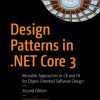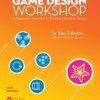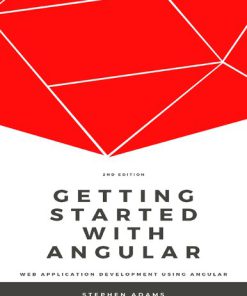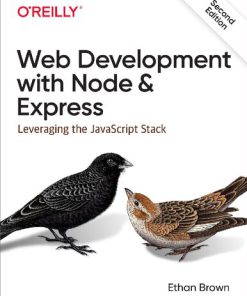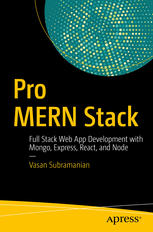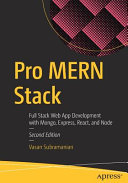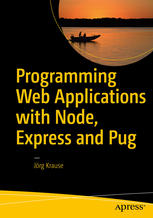Getting MEAN with Mongo Express Angular and Node 2nd Edition by Simon Holmes, Clive Harber 1638355243 9781638355243
$50.00 Original price was: $50.00.$25.00Current price is: $25.00.
Getting MEAN with Mongo Express Angular and Node 2nd Edition by Simon D Holmes, Clive Harber – Ebook PDF Instant Download/DeliveryISBN: 1638355243, 9781638355243
Full download Getting MEAN with Mongo Express Angular and Node 2nd Edition after payment.
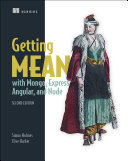
Product details:
ISBN-10 : 1638355243
ISBN-13 : 9781638355243
Author: Simon D Holmes, Clive Harber
Summary Getting MEAN, Second Edition teaches you how to develop full-stack web applications using the MEAN stack. This edition was completely revised and updated to cover MongoDB 4, Express 4, Angular 7, Node 11, and the latest mainstream release of JavaScript ES2015. Purchase of the print book includes a free eBook in PDF, Kindle, and ePub formats from Manning Publications. About the Technology Juggling languages mid-application can radically slow down a full-stack web project. The MEAN stack—MongoDB, Express, Angular, and Node—uses JavaScript end to end, maximizing developer productivity and minimizing context switching. And you’ll love the results! MEAN apps are fast, powerful, and beautiful. About the Book Getting MEAN, Second Edition teaches you how to develop full-stack web applications using the MEAN stack. Practical from the very beginning, the book helps you create a static site in Express and Node.
Getting MEAN with Mongo Express Angular and Node 2nd Table of contents:
Part 1. Setting the baseline
Chapter 1. Introducing full-stack development
1.1. Why learn the full stack?
1.2. Introducing Node.js: The web server/platform
1.3. Introducing Express: The framework
1.4. Introducing MongoDB: The database
1.5. Introducing Angular: The front-end framework
1.6. Supporting cast
1.7. Putting it together with a practical example
Summary
Chapter 2. Designing a MEAN stack architecture
2.1. A common MEAN stack architecture
2.2. Looking beyond SPAs
2.3. Designing a flexible MEAN architecture
2.4. Planning a real application
2.5. Breaking the development into stages
2.6. Hardware architecture
Summary
Part 2. Building a Node web application
Chapter 3. Creating and setting up a MEAN project
3.1. A brief look at Express, Node, and npm
3.2. Creating an Express project
3.3. Modifying Express for MVC
3.4. Importing Bootstrap for quick, responsive layouts
3.5. Making it live on Heroku
Summary
Chapter 4. Building a static site with Node and Express
4.1. Defining the routes in Express
4.2. Building basic controllers
4.3. Creating some views
4.4. Adding the rest of the views
4.5. Taking the data out of the views and making them smarter
Summary
Chapter 5. Building a data model with MongoDB and Mongoose
5.1. Connecting the Express application to MongoDB by using Mongoose
5.2. Why model the data?
5.3. Defining simple Mongoose schemas
5.4. Using the MongoDB shell to create a MongoDB database and add data
5.5. Getting your database live
Summary
Chapter 6. Writing a REST API: Exposing the MongoDB database to the application
6.1. The rules of a REST API
6.2. Setting up the API in Express
6.3. GET methods: Reading data from MongoDB
6.4. POST methods: Adding data to MongoDB
6.5. PUT methods: Updating data in MongoDB
6.6. DELETE method: Deleting data from MongoDB
Summary
Chapter 7. Consuming a REST API: Using an API from inside Express
7.1. How to call an API from Express
7.2. Using lists of data from an API: The Loc8r homepage
7.3. Getting single documents from an API: The Loc8r Details page
7.4. Adding data to the database via the API: add Loc8r reviews
7.5. Protecting data integrity with data validation
Summary
Part 3. Adding a dynamic front end with Angular
Chapter 8. Creating an Angular application with TypeScript
8.1. Getting up and running with Angular
8.2. Working with Angular components
8.3. Getting data from an API
8.4. Putting an Angular application into production
Summary
Chapter 9. Building a single-page application with Angular: Foundations
9.1. Adding navigation in an Angular SPA
9.2. Building a modular app using multiple nested components
9.3. Adding geolocation to find places near you
9.4. Safely binding HTML content
9.5. Challenge
Summary
Chapter 10. Building a single-page application with Angular: The next level
10.1. Working with more-complex views and routing parameters
10.2. Working with forms and handling submitted data
10.3. Improving the architecture
10.4. Using the SPA instead of the server-side application
Summary
Part 4. Managing authentication and user sessions
Chapter 11. Authenticating users, managing sessions, and securing APIs
11.1. How to approach authentication in the MEAN stack
11.2. Creating a user schema for MongoDB
11.3. Creating an authentication API with Passport
11.4. Securing relevant API endpoints
Summary
Chapter 12. Using an authentication API in Angular applications
12.1. Creating an Angular authentication service
12.2. Creating the Register and Login pages
12.3. Working with authentication in the Angular app
People also search for Getting MEAN with Mongo Express Angular and Node 2nd:
mongo express query example
mean mongodb express angular node
mean=mongodb+express+angularjs+node js
mongo express angular node
angular mongodb example
Tags: Getting MEAN, Mongo Express, Angular, Simon Holmes, Clive Harber
You may also like…
Computers - Web Development
Computers - Web Development
Web Development with Node and Express Leveraging the JavaScript Stack 2nd Edition Ethan Brown
Computers - Programming
Computers - Programming
Computers - Programming
Education Studies & Teaching - Educational Theory


